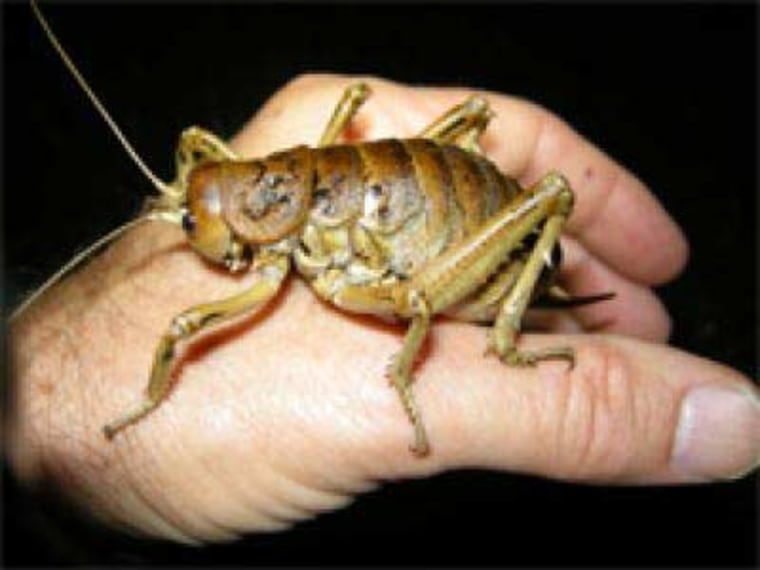Female giant weta crickets are huge. At about 0.7 ounces (20 grams), they're one of the world's heaviest insects. But the males are about half their size. Now scientists know why.
In a surprising way, size really matters in this species.
Males that are lighter and have longer legs are more successful at mating. The reason: They can travel farther to find a female.
The most successful males can walk the length of a football field in one night in their native New Zealand, the researchers found by attaching radio-tracking devices to the bugs. That would amount to more than 4 miles (7,000 meters) for a human, given the proportional differences.
Small, long-legged males walked farther, acquired more mates, and transferred more spermatophores to females during the multiple daytime copulations common among these insects.
"Our findings are a rare example of sexual selection favoring a suite of traits that promote greater mobility in one sex only," said biologist Clint Kelly of the University of Toronto. "This is exciting because it suggests that sexual selection for smaller, more mobile males could be responsible for some of the impressive sexual difference in body size in this species."
The finding might also help to explain why males are smaller than females in some other animals, too, the researchers conclude.
The is detailed in the September issue of the American Naturalist.
